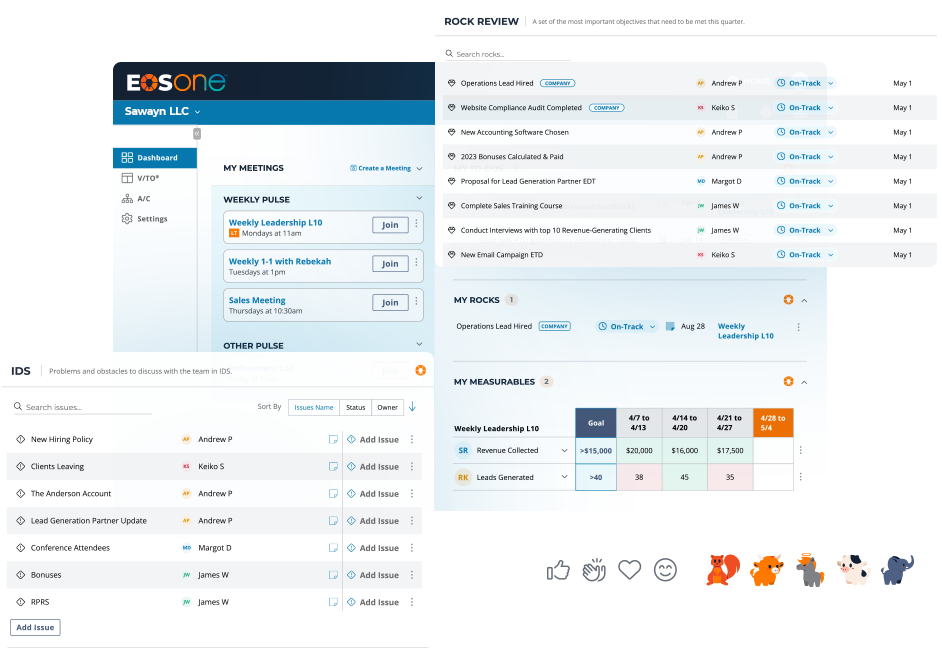When your corporate system – your company, your department, or your team – is malfunctioning, diagnosing the root cause can be tricky. You probably become aware that there is a problem very slowly because the signs are subtle: a general sense of malaise, a dulling of motivation, or a failure to innovate. Over time, more overt symptoms come into evidence, such as reports of unhappy customers, constant disagreements, and inefficient meetings. The constellation of data points prompts you to ask, “What is going on here?”
What is going on may very well be that one or more of your people are acting like ill-fitting gears disrupting the smooth performance of your system.
All systems are composed of multiple parts. If the system has an ill-fitting part (or parts), then the system as a whole cannot work at optimal effectiveness. It may be able to work – it just cannot work well. The same applies to your group, whether you are referring to your company, your department, or your team. Your group is a system composed of people. If one or more of your people doesn’t “fit,” then the effects are going to be seen throughout the system as gears fail to mesh and performance and results are impacted.
I use the term “ill-fitting” very purposefully because it covers a whole gamut of scenarios. For example, people may not fit well into your system because:
- Their behaviors are intrinsically negative and would disrupt any system; e.g., an employee who displays an arrogant attitude or belittling speech.
- Their behaviors, which may be fine in and of themselves, do not mesh with your company’s core values; e.g., a company core value of responding immediately to customer inquiries may not align with an employee’s personal desire to research a matter in depth before calling a customer back.
- Their behaviors may not match their verbal affirmations; e.g., an employee may state publicly that they support a company initiative, but their private “water cooler conversations” tell a different story.
As you can see from the above, it is not only “toxic” people who can negatively impact your system. Even “good” people can exhibit behaviors that are disruptive. What complicates matters even further is that, just as an ill-fitting gear will wear against the gears around it and grind them down, a person who does not fit well in your group will effectively “wear out” the people around them. That is why you end up with systemic frustration, poor performance, passivity, and the like. What may start with one or two people ends up affecting the whole.
You may have certain names or faces flitting through your mind at this point or be thinking, “Now I know why things haven’t been working out!” In turn, that can lead to certain temptations. The first temptation is to do nothing. Maintaining status quo, even a negative status quo, is a normal default position. A word of warning: don’t sit on your hands. If you as the leader fail to take action, the gears will continue to grind against one another and performance and output will just get worse and worse. You need to take action.
That leads to the second temptation, which is to simply get rid of the ill-fitting gears. Another word of warning: that should not be your “go to” action. Rather, you have some serious work to do – work that involves the whole machine, not just the troublesome gears. Here are six “Cs” to help you get your system running optimally again:
1. Communicate your core values.
Don’t assume that everyone in your group knows and understands your company’s core values and the culture you are striving to create. Take the time to communicate – not just once, but regularly – what is expected of everyone. The more you talk about your core values and company culture, the more opportunities you are providing people to “get on board.” The great thing is, some ill-fitting gears can do marvelous self-corrections once they understand how things are supposed to work!
2. Clarify the situation.
Until now, you may not have been able to identify the root cause of the issues you have been facing. Now, sit down and clarify it, either on your own or with your leadership team. Be frank about the person or people who are not meshing well in your system. Describe how their behaviors are playing out and the effects those behaviors are having. Consider what a well-fitting gear would look like and how it would positively impact the system.
3. Coach the people involved.
Here is where things get real: you need to talk with the person(s) involved and provide the constructive feedback necessary to help them see how their current behaviors are impacting the group, understand what is expected, and develop a plan of action for positive change. Remember that this is not a “once and done” conversation: you need to continue to be involved to coach the person as they seek to execute personal change.
4. Call the team together.
As we stated, any ill-fitting gear impacts the whole system. So, get the system involved. As appropriate, be upfront about the issues that have impacted performance and outcomes. Encourage dialogue and community among the team. Talk about holding one another accountable to live into the company’s core values and corporate culture.
5. Change the person if nothing changes.
You can do everything possible and still not get the results you want. Some ill-fitting gears simply will never mesh with your system. That is all right. Accept it and take appropriate action. That can mean transferring the person to another position within the company where their behaviors will be a good fit. It can mean letting the person go from the company. It will probably mean bringing in a new person, hiring from without or promoting from within with a very clear view as to what it means for the new person to be a good “fit” with your system.
6. Celebrate positive change and a well-running system.
Whether your ill-fitting gears transform to work well within your system or you replace them with new gears that will do so, the end result of your work will be positive change and a well-running system – and that is cause for celebration! Take the time to recognize that your group is working well together, that performance is up, and that output is great. That is how to keep your system well-oiled and running smooth!



